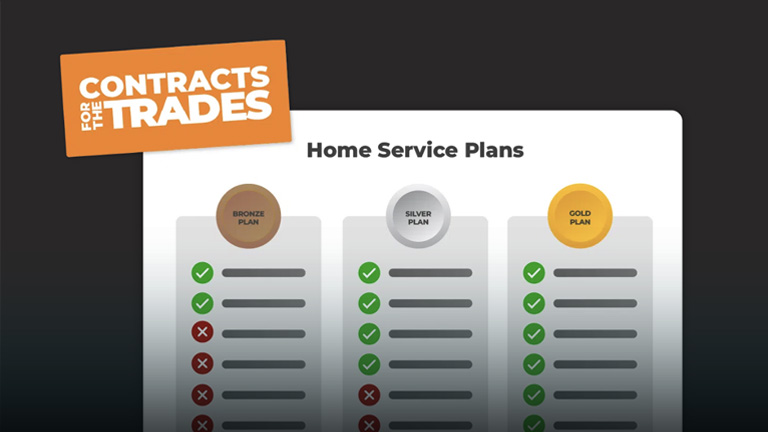The 6 Biggest Challenges in Managing Stock (And How to Overcome Them)
August 21, 2018 | Read: 6 minutes

Whether you have a small closet where you store parts or a state-of-the-art warehouse, there are stock control challenges.
A misstep in how you track and order parts can lead to wasted time and money, late jobs, higher recall rates, a damaged reputation, and unhappy customers.
We searched through online forums, social media, and discussion groups, and talked with the owner of a 12-engineer HVAC business, to find out the top challenges field service businesses encounter when it comes to carrying stock and managing parts.
And because we like to offer solutions, not just problems, we also created a set of stock control spreadsheets (Excel format) that you can use to overcome many of these common challenges—and stay on top of your inventory with stock control software.

What Are the 6 Biggest Challenges in Managing Stock?
Our research has revealed these as the most common stock control challenges…
Now let’s take a closer look at these challenges—and the solutions:
1. Your stock goes “bad” before you can use it
We all know that not having enough stock on hand to meet your needs is a problem. But what many don’t know is that having too much stock is a problem, too.
If you have parts or supplies that are nearing the end of their lifecycle, you won’t be able to use them.
The result?
Wasted money on parts you never used, and wasted time reordering replacement parts.
2. Your supplier doesn’t have the parts you need
“The biggest struggle we have—and have yet to overcome—is when our main supplier doesn’t have the part we need, which happens often,” says James Strilcic, owner of JPS Furnace & Air Conditioning in Calgary, AB. “When this is the case, we have to go through any other supplier we can to find for the specific part in order to keep the scheduled jobs running on time.“

Having to hunt around for a part you need because your go-to supplier doesn’t have it is a big time-waster.
While you can never guarantee a parts supplier will have what you need when you need it, vetting suppliers in advance and setting up trade accounts with the best ones (when possible) can help keep the problem to a minimum.
Our article 7 Supplier Evaluation Questions to Ask Before Choosing a Parts Vendor can help you line up the best suppliers for your business.
3. You have the stock… you just don’t know where it is
You know you have that boiler part somewhere, but it becomes impossible to find without an organised stockroom. Is in one of your engineers’ vans? Or maybe you did have the part but one of your engineers has used it and didn’t sign it out. (More on that challenge below.)
Our free stock spreadsheets can help with stock control challenges: They include the option to note down the location of each part in whatever way works for you, such as by shelf number, bin location, or service van number.
Another option: Don’t carry stock at all. In this article on why you don’t want to carry stock, we go into detail on why smaller field service businesses may want to skip the stockroom, and an easier way to order stock as you need it, avoiding stock control challenges.
4. Your stock management systems are disorganised
How are you keeping track of parts right now?
If you’re using a paper-based system, you have to rely on your engineers to let the office staff know which parts they’re using—resulting in delays in invoicing, poor cash flow, and invoices that don’t charge for all the parts used on a job.
If you’re looking for additional invoicing management tips, check out the linked blog!
Not to mention those times when you really, really need a part for a job and discover that the bin that held the part is now empty.
Using stock control barcode software turns stock management from a manual, error-prone task to one that seamlessly integrates with your day-to-day workflows.
5. The wrong staff are ordering stock
Letting the wrong employee order parts can cause chaos. ‘Technicians can often call into the office when in need of a part, in which case miscommunication may happen,’ explains Strilcic. ‘The service manager has the expertise in the industry, and understands the specifics of the parts and what’s needed, in which case they should be the only individual to order and organise materials.’

Who in your field service business has the expertise to order parts and keep your storeroom stocked? Depending on the size of your business, that person may have different titles—service manager, office manager, or warehouse manager, for example.
Whoever it is, train your staff to go to that person whenever a part is needed for a job. They’ll be able to get the order done quickly and accurately, and will know the ins and outs of supplier relationships, purchase orders, and parts prices.
6. You don’t know how much of each part to have on hand
Both too little stock and too much stock are major issues, as we discussed earlier. But how do you know how much of each part to keep on hand?
Sales KPIs and job histories can give you an idea of how much you typically use of each part and when you’re most likely to need it.

For example, you might dive into a few years’ worth of sales data and notice that you install an average of 15 circulator pumps in the summer and 40 during the busy heating season. That’s a big clue as to how many you need to have in your stockroom.
However, you can’t analyse data you don’t have, which is why successful businesses invest in field service management software. This lets them easily collect data, analyse it, and make the right decisions.


Linda Formichelli
Linda is a long-time journalist and content writer in Raleigh, North Carolina, USA.








